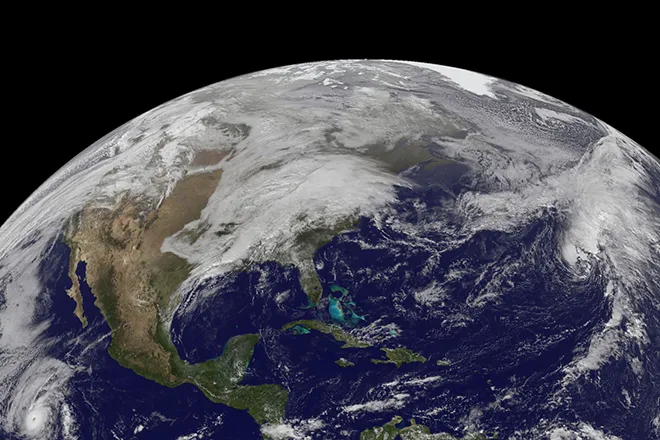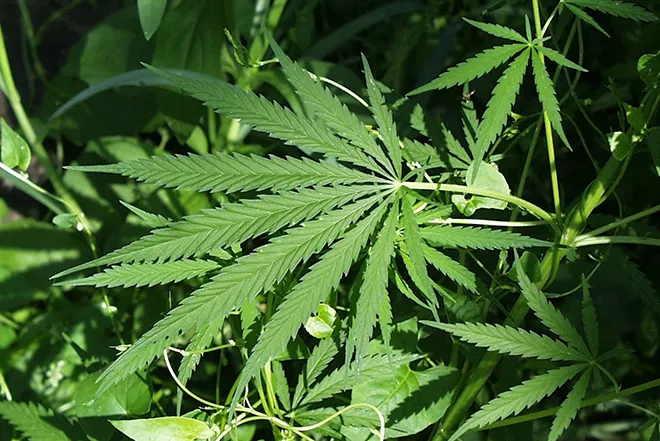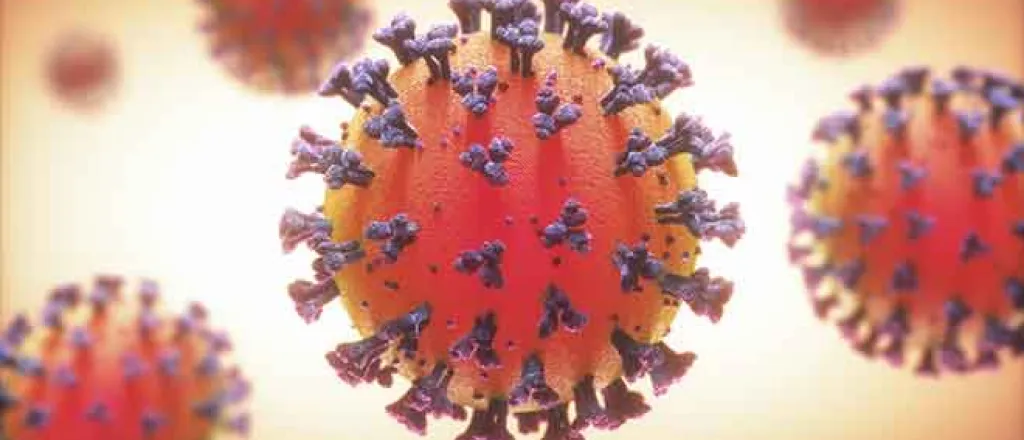
COVID-19, smell and taste – how is COVID-19 different from other respiratory diseases?
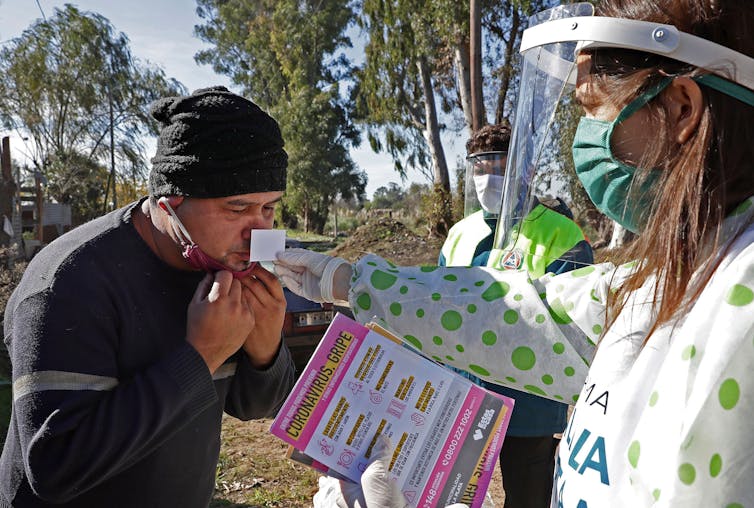
John E Hayes, Pennsylvania State University and Valentina Parma, Temple University
In March 2020, Google searches for phrases like “can’t taste food” or “why can’t I smell” spiked around the world, particularly in areas where COVID-19 hit hardest. Still, many of us have experienced a temporary change in the flavor of our food with a common cold or the flu (influenza). So, is COVID-19 – the disease caused by the SARS-CoV-2 virus – somehow special in the way it affects smell and taste?
We are researchers who study the relationships between human behavior and the sensations people experience from chemicals in daily life. Upon learning that COVID-19 might differentially affect taste and smell, we thought our expertise might be relevant, so we got to work.
The flavor of food is more than just taste
When people “taste” food, they are experiencing input from three different sensory systems that are knitted together to form a singular unified sensation. Strictly speaking, taste describes the five qualities we sense on the tongue, including sweet, salty, bitter, sour and savory/umami. Savory, also known as umami, refers to the meatiness of broth, cheese, fish sauce, or a sundried tomato.
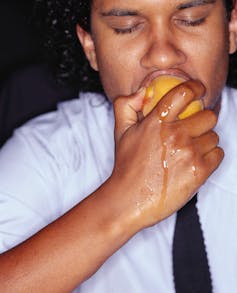
Other sensations from food occur via our sense of smell, even though we experience them in the mouth. Volatile chemicals are released when we chew. These chemicals travel through the back of the throat to reach smell receptors found at the top of the nasal cavity, right behind the point where your eyeglasses rest on your nose.
The third sensory system involved in food flavor involves touch and temperature nerves that can also be activated by chemicals. This is known as chemesthesis. In the mouth, these sensations include the burn of chili peppers, the cooling of mouthwash or mints, the tingle of carbonation, or the vibrating buzz of Sichuan peppers. Together, these three chemosensory systems – taste, smell and chemesthesis – work to define our perceptual experiences from food.
Common viral infections attack the nose more than the mouth
Loss of smell is common with many viruses, including rhinoviruses, influenza, parainfluenza and coronaviruses, and it is normally attributed to nasal inflammation that restricts airflow.
If your nose is blocked, it is not surprising you are not able to smell much. Typically, the other two systems – taste and oral chemesthesis – are not affected, as a blocked nose does not alter our ability to taste sugar as sweet or feel the burn from a chili pepper. With time, most patients recover their senses of smell, but occasionally some do not. Causes vary, but in some individuals, inflammation from a viral illness appears to permanently damage key structures located around the smell receptors.
SARS-CoV-2 isn’t like those other viruses
Since early spring 2020, firsthand reports have indicated that the SARS-CoV-2 virus, the novel coronavirus that causes COVID-19, might affect the mouth and nose more severely than the common cold or the flu. Not only were the reports of loss more frequent, but they also differed from what is normally seen.
One British surgeon with COVID-19 posted a video to Twitter showing that he had lost the ability to feel the burn of chilies. Others, like Penn State undergraduate Caela Camazine, reported losing their sense of smell and taste completely without any nasal congestion.
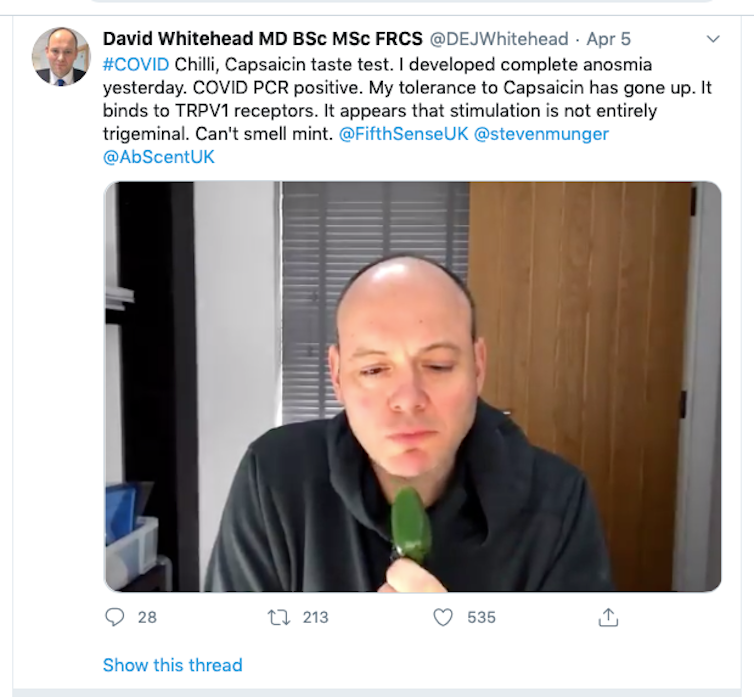
Based on the spike in Google searches, and these atypical accounts of chemosensory loss, more than 600 researchers, clinicians and patient advocates from 60 countries formed the Global Consortium for Chemosensory Research.
The Global Consortium for Chemosensory Research launched a global survey in 32 different languages to better understand what COVID-19 patients are experiencing. Initial results from our survey support the idea that COVID-19 related losses are not limited to smell, as many patients also report disruption of taste and chemesthesis.
Our understanding of how the SARS-CoV-2 virus can affect multiple sensory systems is still quite limited, but is advancing daily. Initial work suggests that smell disturbances in COVID-19 patients are caused by the disruption of cells that support olfactory neurons. In our noses, we have nerve cells called olfactory sensory neurons, which are covered with odor receptors tuned for certain volatile chemicals. When a chemical binds an odor receptor, the olfactory sensory neuron fires a signal to the brain which we perceive as a smell. Notably, it does not appear that the virus targets olfactory sensory neurons directly.
Instead, the virus seems to target specialized supporting cells that cradle the olfactory sensory neurons. These support cells are covered with a different receptor, the ACE2 receptor, which acts as an entry point for the virus. In contrast, the way SARS-CoV-2 might directly affect taste and chemesthesis remains unknown.
Will COVID-19 patients recover their sensory perception?
We just don’t know yet whether COVID-19 patients will recover their sense of smell, taste and chemesthesis. Many patients have reported recovering completely within two or three weeks, while others report their sensory loss lasts for many weeks. To connect with other individuals who are experiencing smell and taste loss related to COVID-19, consider reaching out to organizations advocating on behalf of those who suffer from smell and taste loss, such as AbScent and FifthSense.
Because more data are needed, we are asking for your help in our research. If you know anyone who is (or recently has been) coughing and sniffling, invite them to complete the Global Consortium for Chemosensory Research survey, which takes about 10 minutes.
We want anyone who has had any upper respiratory illness (COVID-19 or not) recently so we can compare individuals with COVID-19 to individuals with the flu or the common cold. By volunteering for our study, or by spreading the word on this research study, you can contribute to better understand how COVID-19 is special in its ability to affect smell, taste and chemesthesis.
[Get facts about coronavirus and the latest research. Sign up for The Conversation’s newsletter.]![]()
John E Hayes, Associate Professor of Food Science, Pennsylvania State University and Valentina Parma, Research Assistant Professor, Temple University
This article is republished from The Conversation under a Creative Commons license. Read the original article.






